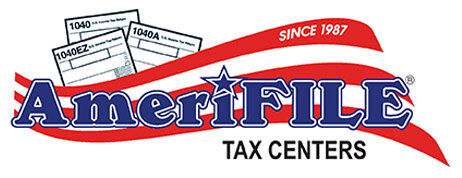AmeriFile makes Earned Income Credit EASY!
Simply Put… The Earned Income Credit (EIC) is like a reward from the government to help people who work hard but don’t make a lot of money. Imagine you have a piggy bank, but it doesn’t get filled up very fast because your allowance is small. The government sees that you’re trying your best, so they add some extra money to your piggy bank to help you out. This helps families buy things they need, like food or clothes. The more kids you have, the bigger the reward can be, because the government knows bigger families need more help.
The calculation of the Earned Income Credit (EIC) can be complex because it depends on multiple factors, such as income, filing status, and the number of qualifying children. Here’s an explanation of how it works:
Key Factors in the EIC Calculation
1. Earned Income:
• Wages, salaries, tips, and other taxable employee pay.
• Net earnings from self-employment.
2. Adjusted Gross Income (AGI):
• Your total income minus specific deductions. Both your earned income and AGI must be below certain thresholds to qualify for the EIC.
3. Number of Qualifying Children:
• The credit increases with more qualifying children, up to three or more children.
4. Filing Status:
• The credit varies depending on whether you’re filing as single, head of household, or married filing jointly.
5. EIC Phase-In and Phase-Out:
• The credit increases as your income rises up to a maximum point (phase-in).
• After reaching a certain income threshold, the credit begins to decrease (phase-out).
History of EIC:
The Earned Income Credit (EIC), now commonly known as the Earned Income Tax Credit (EITC), is a federal tax credit designed to provide financial assistance to low- and moderate-income workers, especially those with children. Here's a brief history of its development:
1975: Creation of the EITC
The EITC was introduced in 1975 as part of the Tax Reduction Act of 1975, signed into law by President Gerald Ford.
Initially, it was designed as a temporary program to offset the impact of payroll taxes and provide an incentive for work during a time of economic stagnation.
The maximum credit was $400, targeting working families with low incomes and dependent children.
1986: Expansion Under Reagan
President Ronald Reagan made the EITC permanent as part of the Tax Reform Act of 1986.
The expansion reflected bipartisan recognition of the program as an effective anti-poverty measure and an alternative to welfare.
1990: Substantial Growth
The credit was significantly expanded under the Omnibus Budget Reconciliation Act of 1990, signed by President George H.W. Bush.
Adjustments were made to increase the credit amount and expand eligibility.
